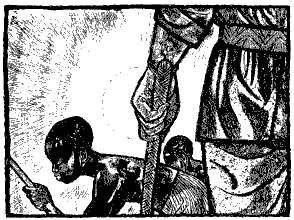Philosophy
Spotting unstated claims and assumptions

Let's talk about directions. Is New York to the right of Chicago?
Well, is it? If you think about what you know of U.S. geography, this isn't a difficult question. Chicago is in the interior of the U.S., and New York is on the Atlantic Coast.
New York is east of Chicago, but how about right of Chicago? That's not quite the same thing, is it?
The answer depends on what you can safely assume about your perspective. The answer is "yes, it's to the right" if you assume that the direction is to be judged by someone above the U.S. and looking north and down onto Earth because from that perspective the directions of east and right are the same direction.
But suppose you make a different assumption. If you were standing on the North Pole, you'd say New York is left of Chicago. If you were standing inside the Earth at its center, you'd also say New York is to the left. But it would be very odd to assume that the judgment is to be made from either of these perspectives.
So, the bottom line here is that it's correct to say New York is to the right of Chicago if you make the normal assumptions about perspective.
Critical thinkers are charitable and not overly picky; they always pay attention to what assumptions are appropriate for the situation.
But they aren't so charitable that they overlook significant errors. Some arguments require making an assumption that really is not acceptable, and this is a sign that the argument is faulty or "unsound." For example, look at this one:
Since New York is west of Chicago, and Chicago is west of Cleveland, therefore New York is west of Cleveland.This would be a good argument except for the faulty assumption that New York is west of Chicago. It's not west. [Or at least it's not west normally, but it could be west if we are talking about someone's poorly drawn map.]
We critical thinkers need to detect assumptions in order to determine whether they are acceptable. But it's not always so easy to detect the assumptions. Arguments often contain assumptions that aren't stated clearly or are stated indirectly. Here is an example:
The pols keep arguing that institutions can't be changed when, in fact, they change all the time. Haven't they ever heard of the institution of slavery?

The author of this argument is trying to convince the reader that the politicians are wrong in saying that institutions can't be changed. The reason given is that the institution of slavery has changed. Notice that this reason is expressed indirectly with a question. The question is supposed to have an obvious answer, and it is intended to remind the readers of what they know from history, that the institution of slavery has changed considerably.
Readers of that argument who don't know about the history of slavery or who don't get the author's indirect reference will not appreciate the author's argument. They won't "get it."
Most arguments contain unstated assumptions. You need to identify those assumption if you are going to understand the arguments. It would be helpful if you could simply ask the person what they are assuming, but usually you can't, or, even if you can, you don't want to stop the flow of the conversation in order to ask, so you need to use your detective skills to figure out the relevant assumptions.
Use your detective skills to figure out what is missing in the following argument:
In ancient Egypt, one out of three newborns died within the first few months. So, it's pretty clear that pregnant Egyptian women were magnets for demons.

Can you spot the missing assumptions? It's very difficult to discover what the speaker might be thinking other than "If in ancient Egypt, one out of three newborns died within the first few months, then it's pretty clear that pregnant Egyptian women were magnets for demons." But that's a weird assumption. At least it's weird here in the 21st century. Why make that assumption? Who knows. It's very unclear what the details are. If you want to be fairly sure what assumptions are being made, you'll just have to ask the speaker to be clearer about what is being assumed here.
Sometimes arguers will tell you their assumptions, but will leave their conclusion unstated--though this is rarer than leaving a premise unstated. For example, in the passage below, the arguer presents the premises to us but lets us draw our own conclusion:
All REAL lawyers know what the word "tort" means, but SHE doesn't.
What is the conclusion we are supposed to draw?
The unstated or implicit conclusion is that she isn't a real lawyer. You'd have to have some significant clues in the context or surrounding aspects of the conversation in order to be sure that you were really supposed to draw a conclusion. I inserted one clue by placing the word "real" in capitals and italics to make you wonder why the speaker would be emphasizing the word "real." If clues were not available to you, then you probably should say that you were presented with statements, but no argument. That is, maybe the remark, "All real lawyers know what the word 'tort' means, but she doesn't" is simply a couple of comments on what lawyers do or don't know.
Arguments can have some implicit premises, but an argument isn't allowed to have all its premises implicit.When you locate missing assumptions, you always want to be alert to whether you should believe the assumptions. Consider the assumptions of whoever made the comments beneath this picture:

so she must know him.
The clue that this is an argument and not just a claim is the presence of the conclusion indicator word "so." Analyzing this passage as an argument, you can detect the implicit premise: persons who leave someone's home must know the person whose home it is. That's not a good assumption. It's false.
How did we figure out that this assumption was being made? We can tell the arguer is making the assumption because it's what is needed to reasonably connect the premises to the conclusion--either to make the conclusion true when the premises are or else to make the conclusion be probable. Without the assumption, the argument would be completely ineffective; it would be ridiculously weak, yet it is unusual for people to present ridiculously weak arguments. This ability to reason this way in order to uncover implicit premises is a special detective skill we use all the time in understanding other people's arguments.
You can easily figure out a better argument about the woman leaving the minister's house:
This is a picture of her leaving the minister's home, so there's a good chance she knows him.The missing premise would be:
If you exit a home, then there's a good chance you know the persons who live there.
This assumption is part of common sense, so it is acceptable to us.
Common sense assumptions are normally safe assumptions. We have common sense when we know the common knowledge that most everyone shares. Here are some more examples of what is meant by common sense:
- every person is younger than their mother
- you can push something with a stick but not with a cloud
- one hundred dollars is a lot to pay for a sandwich
- snow is cold
- a week is longer than a minute
- computers need a source of power to operate
- most birds can fly
When an argument relies on an assumption that is part of common sense, the assumption is normally left implicit in the conversation. Why bother stating the obvious?
In addition to common sense, many arguments will leave well known facts unsaid. If an argument is about U.S. politics, it might leave unsaid that the U.S. has a president, not a king, because the audience is expected to know this. The argument below has an implicit conclusion and depends on many assumptions from common sense plus our background knowledge that a man was sent to the moon, that this trip was very expensive, that something should be done about situations in which rats bite little kids, and so forth. On the surface the passage is just a list of complaints, but in fact the arguer is intending us to draw a certain conclusion that attacks something, though it takes some effort on our part to see this.
I can't feed my kids, and whitey's on the moon. Rats bit my little sister. Her leg is swelling, and whitey's on the moon. The rent is going up. Drug addicts are moving in, and whitey's on the moon.
The unstated conclusion is that the government's spending priorities need revision; there should be less emphasis on funding the space program and more on doing something about poverty, health, and drug addiction.
So, the attack is directed against the government and its spending priorities.
When an argument has an implicit attack, we say that the arguer is using innuendo.
Critical thinkers are continually aware of possible innuendo. For example, can you detect the scare tactic in this letter?
Dear Professor Williamson:My grade on the quiz is unfair, and I'd like you to call me about it at home at 486-7788. If not, I'll come to your office during office hours on Thursday.
Of course you know my Uncle James. He's the vice president for academic affairs, the person who decides on faculty raises.
Sincerely yours,
Carole Rutledge
The vice president is her professor's boss, and her letter is trying to scare her professor into revising her grade. When challenged about this, Carole might say, "I never threatened him; he's just reading something into the letter that's not there." But she's wrong. It's not there explicitly, but it's there implicitly.
Being able to spot unstated assumptions is crucial to critical thinking.
For a sample question, can you spot the faulty assumption underlying this word problem from a fifth grade mathematics book? Look at it from the perspective of a book editor who is trying to decide whether to publish the book and is checking the quality of the math problems.
Dr. Richard Feynman and his daughter Melissa are looking at the stars on a clear, dark night. Stars come in many colors and temperatures.This is a very strange question, isn't it? The ridiculous assumption is that temperatures, when added, give you a total worth knowing.Melissa sees an orange star and three yellow stars. Richard sees a blue star and two orange stars. What is the total of the temperatures of the stars seen by the father and daughter?
- orange stars: 4000 degrees
- yellow stars: 5000 degrees
- blue stars: 7000 degrees.
The critical thinker, unlike the naive thinker, is on guard against accepting stupid assumptions. Yet there are situations in which even though they are ridiculous you might still need to accept them, at least temporarily. For example, if you are a student in the fifth grade class, and your teacher seems to be serious about wanting you to answer the question above about adding the temperatures of stars, then you apply your critical thinking skills and think, "OK, it's a dumb question, but I'll do the math computation and get the right answer."
Assumptions aren't just made in arguments. We make them in definitions, explanations, and interpretations of the world around us. For a wonderful example of a false assumption everyone makes when trying to make sense of what they see, look at this fiery dragon. Turn on your computer's sound. If your computer can't show the movie, forget it.
The false assumption you make while watching the movie is caused by the makeup of the human visual system, so your initially accepting the false assumption does not show that you are failing to be a critical thinker.